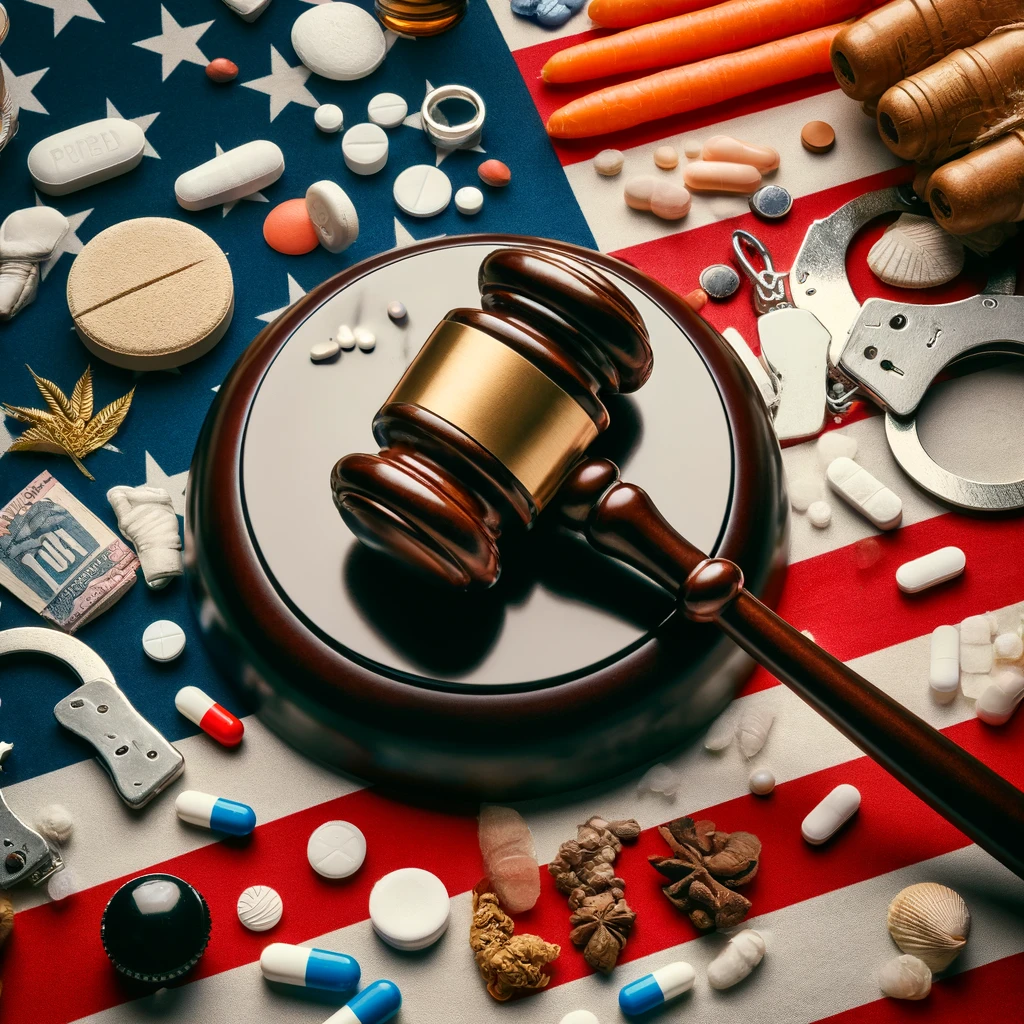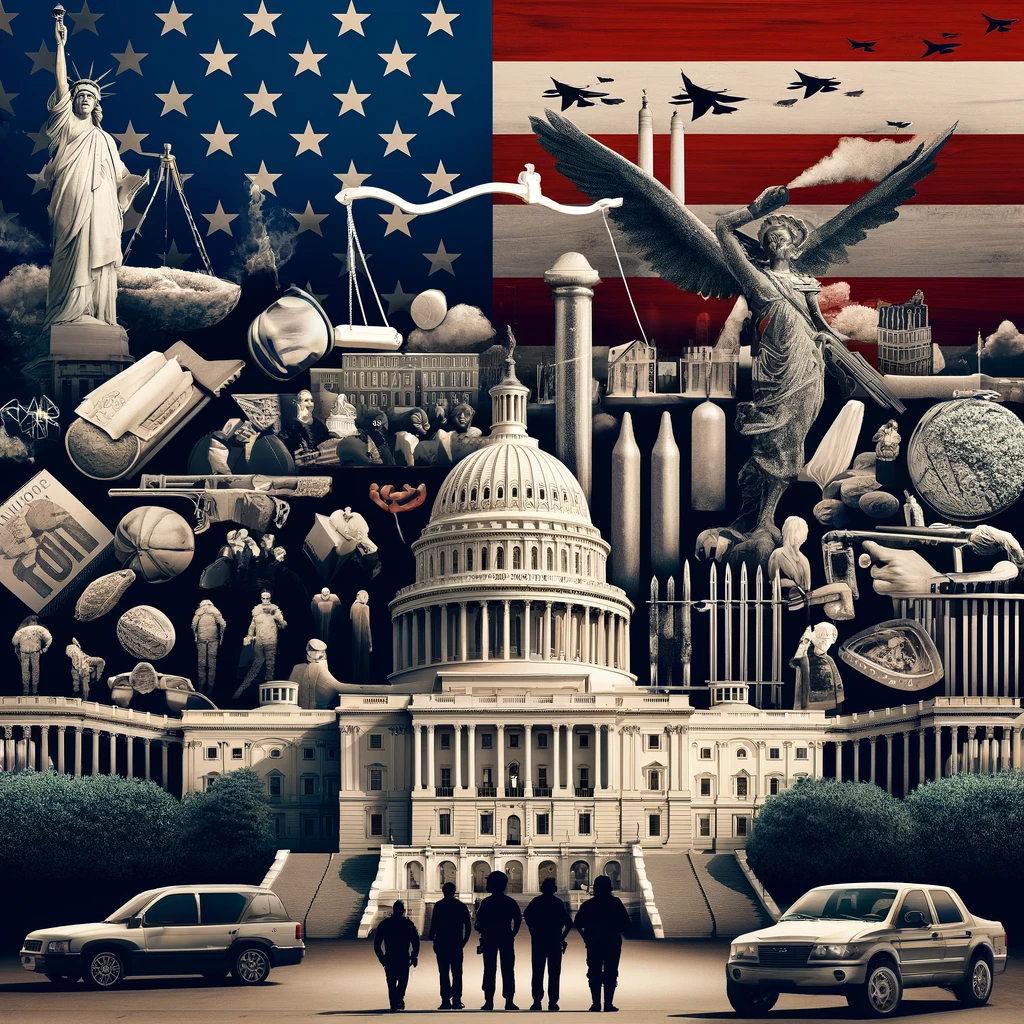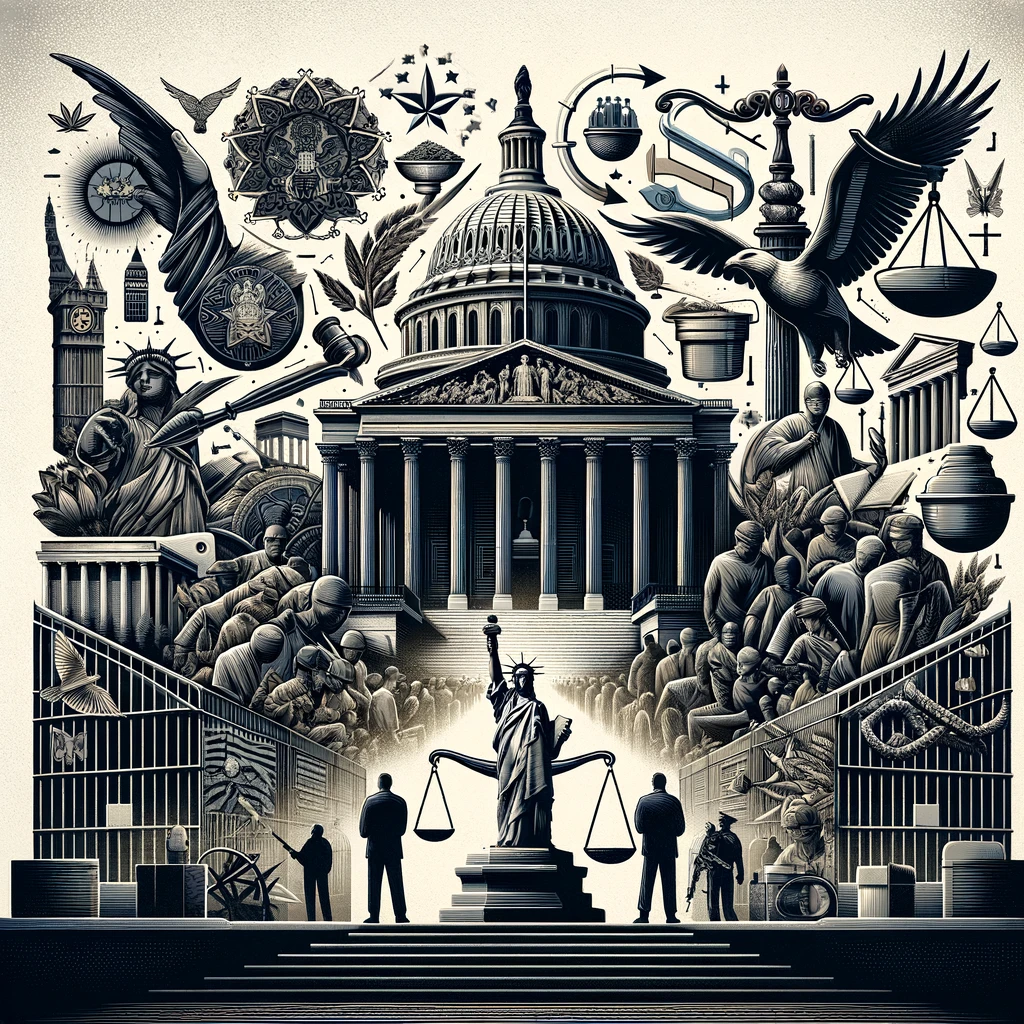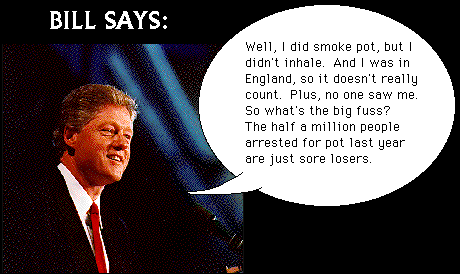Introduction
The United States, a nation with a historical lust for conflict, has fought many wars. Yet, one of its longest and most contentious battles hasn’t taken place on foreign soil but within its own borders—the war on drugs.
The United States has been at war almost continually since 1776. In the past 236 years we have been fighting some type of conflict for 214 years or about 90% of the time. While this statistic refers to military conflicts it gives a good idea of the mentality of The United States and how they approach obstacles that face them. Taking this into account it should come as no surprise to you how they went about trying to tackle America’s drug problem.

The Start Of The US Drug War (1906 – 1970)
Emergence of Drug Culture
Firstly I want to take a look at when the war on drugs began, drug use became prevalent in America after the civil war ended, at the time the drug of choice was opium. About 15 years later cocaine became incredibly popular and the coca leaf was also used in items such as health drinks and remedies which were readily available to the public.
During this time period the use of drugs was part of everyday life, heroin was used to treat respiratory illness and cocaine could be found in Coca-Cola. Doctors were also very irresponsible when it came to prescribing drugs and regularly gave out morphine for minor pain relief. All of these factors combined meant that at the end of the 19th century there were endemic levels of cocaine and opium abuse within the United States.
Legislative Beginnings
Attitudes started to change at the beginning of the 20th century, there was a greater understanding of the addictive qualities of these psychotropic drugs and the local governments were worried about the effect it was having on their populous, in an attempt to curtail this abuse they began to prohibit the importation of opium and banned all operating opium dens.
This was followed by the Pure Food and Drug Act of 1906 which required all doctors to accurately label their medicines so that patients knew exactly what they were consuming, it was at this time that we saw a shift in mentality as people were no longer viewing these drugs as harmless remedies for their aches and pains.
Escalating the Battle
The Harrison Narcotics Act, which was passed in 1914, was the start of a 100 year drug war which we are still fighting today. The act prohibited the manufacture and sale of cannabis, heroin, cocaine and morphine.
It was aggressively enforced and even doctors who were providing addicts with drugs via maintenance programs were targeted by the government. Doctors across the country argued that providing addicts with drugs was a valid form of treatment however in 1919 The Supreme Court ruled against them in Webb et al. V United States. In the 20 years that followed this ruling over 5000 doctors were jailed or fined under this piece of legislation.
The Federal Bureau of Narcotics
The creation of the Federal Bureau of Narcotics was a huge turning point in regards to US drug policy, this unit was headed up by Harry J. Anslinger who was set to head the agency for the next 32 years and personally shape US drug policy in the coming years. During his time at this agency drugs were increasingly criminalized.
The Boggs Act of 1951 is evidence of this, this act amended the Narcotic Drugs Import And Export Act and set mandatory custodial sentences for drug convictions. This act was heavily focused on cracking down on cannabis use, a first time offence for cannabis possession now carried a minimum sentence of 2-10 years in jail along with a fine of up to $20,000.
The Boggs Act was shortly followed by the Narcotics Control Act of 1956 which has been described as “the most punitive and repressive anti-drug legislation ever adopted by Congress”. This act led to mandatory sentences of 20 years for possession of cannabis, this meant that the mandatory minimum sentence for possession of marijuana was actually higher than the mandatory minimum for murder and rape which was 15 years and 10 years respectively. That sentence was only for possession, if you were unlucky enough to get charged with the manufacture of cannabis then the mandatory minimum was a whopping 40 years in jail.
Another part of this law stated that anyone was arrested under this act was not able to be given parole or probation and suspended sentences were no longer a thing for drug offenders. The law also stated that the death penalty could be invoked as a form of punishment for anyone who sold drugs such as heroin to a minor, this was to be expected from a man such as Anslinger as he had set out to establish a drug policy which had a heavy focus on enforcement. He went even further and criticized a lot of judges for being too harsh on drug dealers and drug users and called for even longer minimum sentences.
Propaganda and Punishment
Harry J. Anslinger was also a big believer in the power of propaganda and when he was in charge of the Federal Bureau of Narcotics they used it as a preventative measure in an attempt to steer people away from drugs. Under Anslingers watchful eye they created multiple ridiculous myths and incredibly far fetched horror stories in an attempt to scare people away from drugs rather than educating them on the matter instead. It seemed as though Anslinger has a personal fixation on marijuana and he went as far as to blame acts of murder and sexual assault on it, he was noted to have said that cannabis had the potential to make people “fly into a delirious rage which would lead to them committing violent crimes”.
The fact that Anslinger and his agency went after cannabis so much could be an indicator that there was people above him who wanted cannabis to remain illegal for whatever reason. Anslinger could have recounted heroin horror stories which were not far fetched and would have been better received by the US public however he chose to keep up the bizarre anti marijuana rhetoric which eventually lead to people just not believing anything drug related if it came from an official government source.
In the decade that followed, the 1960’s, it would become evident that Anslingers propaganda war had failed and if anything it had disenfranchised the drug users within the US. Lack of belief in the constant propaganda and the rise of counterculture of college campus’s meant that they was a large increase in the use of marijuana, hippies and the such also started to experiment with other psychedelic drugs such as LSD in an attempt to expand their minds. Another attributing factor to the increasing levels of drug use was the return of US soldiers from Vietnam, many of them returned home with heroin and marijuana addictions as a result of the long drawn out war.

A Change In Direction
Lyndon B. Johnson was president at the time and he directed his administration to take a different approach to the war on drugs as it was evident that the current system was not working like they wanted it to. In 1966 he passed the Narcotics Addict Rehabilitation Act which stated that drug addiction was in fact a mental illness and compared drug addiction to the concept of alcoholism.
Even though they had recognized that drug addiction was a mental illness and should be treated as such they still pursued criminal cases against drug addicts so there was little that actually changed as a result of this act. There was not even an increase in funding for drug addiction treatment however the act did pave the way for federal expenditure of drug rehabilitation programs in the future.
The Modern Drug War (1969+)
Nixon’s New Front
In 1969 Richard Nixon was elected as President of the United States, his new and invigorated war on drugs ushered in a new era for US drug policy. It was not until 1971 that Nixon officially declared his war on drugs, he proclaimed “America’s public enemy number one in the United States is drug abuse. In order to fight and defeat this enemy it is necessary to wage a new, all-out offensive.”
Nixon decided to wage war against both sides of the drug trade, he fought the supply side in countries such as Mexico. He also attempted to lessen domestic demand. Although he was taking an aggressive approach to his new war on drugs he did take into account the disease view of addiction and as a result of this Nixon initiated the first significant funding of addiction treatment programs.
His investment in treatment can be seen in the incredibly controversial methadone maintenance program where heroin addicts could get a prescription for methadone in an attempt to wean people off the feared drug. He must have got something though as the methadone maintenance program is still in use in various countries across the world such as the United Kingdom.
Months after this controversial treatment program Nixon addressed Congress and states that “as long as there is a demand, there will always be those willing to take risks to meet the demand”. It is strange that he publicly admitted that all efforts to prohibit drugs were useless as demand could never be diminished due to the drugs addictive qualities and while there was demand there will always be supply, it is just basic economics.
The DEA and Beyond
Sadly Nixon did not listen to his own advice, his reason for that will become evident later on. Nixon knew he was fighting an unwinnable war however he still plowed headfirst into it and launched a massive overseas crackdown in Mexico in an attempt to pressure the Mexican government to regulate its marijuana growers.
This pressure was applied on foreign soil by the DEA who had been created by Richard Nixon in 1973. At the same time the US government spent hundreds of millions of tax payer dollars on securing the borders between the US and Mexico in an attempt to lessen the amount of drugs coming through the porous border. However as a result of stricter border checks trade between the US and Mexico was heavily impacted, Mexican producers would see their crops rot in front of their own eyes as they waited to be waved through the new secure US border checkpoints.
Although their was a huge economic impact his policy did work and the amount of cannabis coming over from Mexico fell drastically, frustratingly for Nixon this was not going to be enough as Columbia stepped up and supplied the US with the cannabis they demanded via new smuggling routes and the US government was powerless to stop them. The US should have realized after this foreign interdiction that this was not going to work, if they did not tackle the domestic demand then smugglers would always find a way to get their products into the United States.
Political Motivations
One of Richard Nixon’s top advisers and a key figure in the Watergate scandal said the war on drugs was created as a political tool to fight blacks and hippies. “The Nixon campaign in 1968, and the Nixon White House after that, had two enemies: the antiwar left and black people,” former Nixon domestic policy chief John Ehrlichman told Harper’s writer Dan Baum. “You understand what I’m saying? We knew we couldn’t make it illegal to be either against the war or black, but by getting the public to associate the hippies with marijuana and blacks with heroin. And then criminalizing both heavily, we could disrupt those communities,” Ehrlichman said. “We could arrest their leaders. raid their homes, break up their meetings, and vilify them night after night on the evening news. Did we know we were lying about the drugs? Of course we did.” Ehrlichman’s comment is the first time the war on drugs has been plainly characterized as a political assault designed to help Nixon win, and keep, the White House.
President Carter’s Stance on Decriminalization
President Carter was elected in 1977 and he was a huge advocate for the decriminalization of cannabis as he did not believe that the punishment for possessing a drug should not be more damaging than the drug itself. Although he was voicing support for softer cannabis laws he did not go as far as advocating for the legalization of it. If Nixon couldn’t follow his own sage advice about how interdiction and eradication in source countries was always destined to fail then we cant really blame President Carter for ignoring it either. Just like Nixon, Carter chose to pursue the supply side of the drug war with the majority of funding going towards interdiction and eradication programs on foreign soil.
The dream of decriminalization did not stay around for ever, during Carter’s time in office cocaine use rose sharply in the US with domestic demand going from circa 22 tons to about 120 tons in just a 6 year period. The federal and local governments were worried that marijuana was acting as a feeder drug to cocaine so they decided to back away from the decriminalization plan which was a shame as their was no direct correlation between cannabis and cocaine use during his time in office.
Reagan’s Admission and Approach
The next notable point in the drugs war occurred when President Reagan gave a speech in 1981. The speech has been compared to one of Nixon’s speeches as Reagan admitted that he knew it was impossible to win the war on drugs by trying to bring down the supply side of the drug trade. Reagan said “It is far more effective if you take the customers away than if you try to take the drugs away from those who want to be customers”.
The similarities between the two did not stop with just the speech, just like Nixon had done previously President Reagan decided to ignore his own sage advice and focused on tacking the supply side via interdiction on foreign soil. The numbers suggest that the budget for eradication and interdiction rose from $437 million during Carters presidency to $1.4 billion during the first year of Reagan’s presidency. While he tripled the budget which targeted the supply side he also decided to slash $20 million of funding from programs designed to educate and prevent people from every falling into the trap of psychotropic drugs, rehabilitation programs were also effected by these cuts.
While Reagan did focus on the demand side of the drugs trade as well as the supply side he was not very successful. The president decided that he was going to get tough on drug dealers so as a result he launched a program known as the ‘zero tolerance’ program in which punitive measures were the focal point. In 1986 the Anti-Drug Abuse law came into effect which made drug users fully accountable for their own actions and they were penalized accordingly.

Clinton’s Campaign Promises vs. Reality
The next person to take his place in the oval office was Bill Clinton, he had dropped many hints during his campaign saying that he would take a different approach to the republicans when it came to the US drug war. However this all turned out to be false and for the most part Clinton just continued the Republicans flawed supply side focused drug policy.
During Clinton’s 1995 budget an extra $1 billion was allocated for both the supply and demand fronts of the government lead drug war. Clinton also doubled spending on prevention and rehabilitation programs which drew some positive attention from the media at the time. However soon after this their was a huge increase in the amount of money that was being spent on interdiction and law enforcement which meant that of the $13.2 billion allocated to the drug war approximately $7.8 billion was spent on supply sided efforts which left only $5.4 billion to tackle the demand side of the drug war.
There is no doubt that Clinton allocated a lot of money towards tackling the demand side of the drug war however the overall strategy of the government was clearly still targeting the supply side of this unwinnable war.
Although Clinton did little to alter the course of US drug policy he did propose some innovative solutions to the drugs crisis such as the Community Action Programs. However without the support of Congress he not make any meaningful changes in policy. He repeatedly tried to increase spending on the demand side however these attempts where killed by the Republican 104th Congress. It was not just the Republicans to blame as even the Democratic 103rd Congress of the early 1990’s fought against all efforts to shift drug policy towards education, prevention and rehabilitation.
Conclusion: A War Without End
The war on drugs is a saga of ambition, ideology, and perseverance. Despite extensive efforts and the expenditure of vast resources, the battle against drug abuse remains far from over. The history of America’s drug war is a cautionary tale of the challenges inherent in tackling such a pervasive issue. As the nation moves forward, the lessons learned from over a century of conflict serve as guiding beacons, illuminating the path towards a more balanced and effective approach to drug policy.
Part 2: US Drug War In The 21st Century (coming soon)
Why People Sell Drugs On The Deep Web – https://stonercircle.net/deep-web-weed-dealers/





